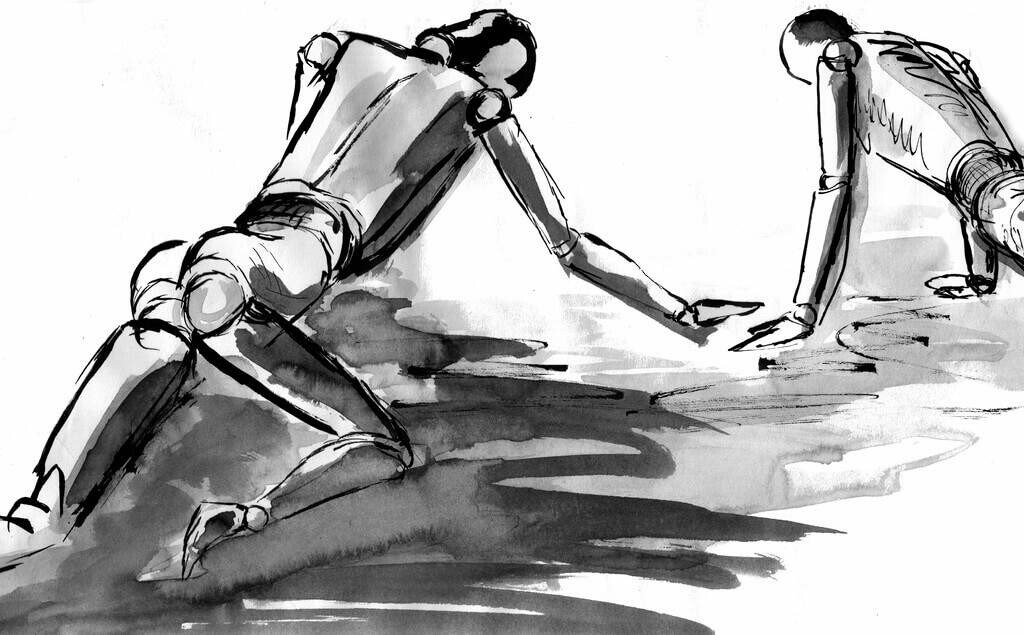Repressed emotions not only impact our mental health but also manifest physically, causing conditions such as ulcers or back pain. The latter, in particular, may have deep roots in our unexpressed feelings and emotions, closely linked to our core beliefs and the deepest values that underpin our lives.
Explore Biodecoding: Emotional Healing for Back Pain Relief
Biodecoding is an approach that examines how blocked emotions and feelings can directly influence back pain. This type of pain is not just a physical nuisance; it is a manifestation of emotional conflicts and stress that we have not been able to process or express properly.
This approach focuses on exploring and addressing the emotional causes underlying various illnesses. Specifically, for back pain, it holds that our vertebrae and spine are not only physical structures but also symbolic representations of the emotional burdens we carry.
Vertebrae and Emotions
Imagine your spine as an open book narrating the story of your emotions and experiences. Each vertebra, each disk, each muscle in your back, is intimately connected with different aspects of your life, both emotional and spiritual.
When we experience an imbalance or discomfort in a specific area of the back, it is as if that part of the book is shouting for attention. It is indicating a possible emotional conflict related to the symbolic area that zone represents.
For example, the lumbar area, related to security and support in life, might manifest pain when we feel insecure or unsupported. The dorsal area, associated with guilt and emotional burden, could reflect tensions when we carry a heavy emotional load.
How Emotions Affect Back Pain
- Stress and emotional tension: our brain and nervous system are intrinsically connected to our spine. Stress and emotional tension can cause muscle contractions and vertebral misalignments, which in turn lead to pain.
- Responsibility and emotional burden: often, back pain arises when we take on responsibilities that are not ours or when we feel overwhelmed by circumstances. This can translate into a physical tension that builds up in our backs.
Studies and Evidence
The connection between our emotions and back pain is not just a theory; science supports it. Numerous studies have demonstrated the significant influence of emotions on the experience of pain.
How does this happen?
- Pain perception: emotions can amplify or reduce the perception of pain. For instance, stress and anxiety can increase sensitivity to pain, while joy and relaxation can have an analgesic effect.
- Body posture: negative emotions, such as sadness or fear, can lead us to adopt slouched postures that eventually generate tension and back pain.
- Spinal health: chronic stress can release cortisol, a hormone that negatively affects the health of the intervertebral discs and increases the risk of back problems.
Emotional Treatment for Spinal Pain
The spine acts as a mirror of our inner world. Each vertebra, each disk, each muscle, is intimately connected with different aspects of our emotional and spiritual life. Pain or discomfort in a specific area of the back can be a signal, a silent cry of an emotional conflict that needs to be heard.
Affected Areas
The lumbar area, for example, associated with security and support in life, can manifest pain when we feel insecure or unsupported. The dorsal area, related to guilt and emotional burden, can reflect tensions when we carry a heavy emotional weight.
Freeing the Back, Releasing Emotions
Biodecoding provides a range of tools to address back pain from an emotional root. Here, we explore some of the most effective techniques:
Conversation Therapy
Verbalizing emotions: talking about our experiences and emotions, especially those that are repressed or difficult to express, can release tension built up in the body.
Identifying patterns: therapy helps us recognize patterns of thought and behavior that contribute to emotional distress and, consequently, physical pain.
Rewriting the story: through therapeutic conversation, we can reinterpret past events and transform the emotions associated with them.
Meditation and Mindfulness
Body-mind connection: these practices help develop greater awareness of bodily sensations and the accompanying emotions.
Stress management: meditation and mindfulness are powerful tools for reducing stress and anxiety, factors that can exacerbate back pain.
Presence in the moment: by focusing on the present, we can free ourselves from mental rumination and worries that generate muscle tension.
Other Complementary Techniques
Breathing exercises: conscious breathing can help release muscle tension and calm the nervous system.
Creative visualization: imagining the healing of the back and the release of pain can have a positive effect on the body.
Bodywork: techniques such as osteopathy or massage can complement Biodecoding by releasing physical tensions and improving posture.
Emotional Connections and Vertebral Pain
Each section of the spine, from the cervical vertebrae to the lumbar vertebrae, has specific emotional associations that can influence the onset of pain.
Cervical Vertebrae and Communication
The cervical vertebrae are associated with our ability to communicate and face life’s challenges. They represent the flexibility or rigidity with which we respond to changes and adversities.
Associated emotions:
- Rigidity and denial: neck pain often reflects a resistance to accepting changes or adapting to new ways of doing things. Stubbornness and the desire to control can cause significant tension in this area.
If you experience neck pain, reflect on your openness to new experiences and changes. Ask yourself: Am I being too inflexible or stubborn in any area of my life?
Dorsal Vertebrae: Burden and Responsibility
The dorsal vertebrae are located at chest height and their pain is directly related to the emotional burdens we do not wish to accept.
Associated emotions:
- Unwanted responsibility: from minor household chores to major obligations like caring for a family member or the demands of an unsatisfactory job, pain in this area can be an indication of discontent with current responsibilities.
When you feel pain in the dorsal vertebrae, evaluate the activities or responsibilities you are undertaking. Is there something you are doing reluctantly?
Lumbar Vertebrae: Essence and Personal Balance
The lumbar vertebrae, extending from the hip to the coccyx, reflect our essence and vital balance.
Associated emotions:
- Financial worries and life balance: pain in this area can be a sign of anxiety over financial issues or an imbalance in fundamental aspects of life, such as spirituality and emotional health.
If you experience pain in the lumbar vertebrae, think about recent financial worries or significant life decisions. Are these factors affecting your emotional well-being?
The Wisdom of the Body: A Path to Harmony
Biodecoding opens our eyes to a profound truth: our body is a wise messenger that speaks to us through its symptoms. Back pain, instead of being an enemy to combat, becomes an invitation to explore our inner world, to listen to hidden emotions and unresolved conflicts that seek to be released.
Every discomfort, every tension, every pain in our spine is a valuable clue that guides us toward understanding our emotional needs. By paying attention to these messages, we can begin to unravel the story our body tells us, identify the patterns that limit us, and find the path to healing.
Biodecoding not only offers us tools to alleviate physical pain but also invites us on a journey of self-discovery and transformation. By listening attentively to our body, we open the door to greater harmony and well-being, not only physically but also emotionally and spiritually.
The cover image has been provided courtesy of Depositphotos.com




